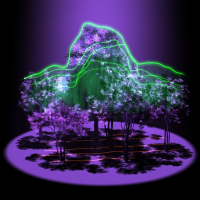New NASA Laser Probe Will 3D Map Carbon in Earth’s Forests

Scientists have long wrestled with the question of how to quantify the impact of deforestation. The loss of global forests, along with the capacity of those trees to absorb and store carbon long-term, undoubtedly affects the Earth. In general, the larger, older trees are better at absorbing and storing carbon from the atmosphere. But when a forest is destroyed, how much carbon is lost? Can we accurately tell how much of the Earth’s forest areas have already disappeared? Will planting new trees counter the resulting effects on emissions?
Scientists are hoping new technology being developed for the International Space Station will provide valuable hard data about the impact trees have on carbon levels in the atmosphere. NASA announced it is partnering with the University of Maryland to develop a laser-based instrument—the Global Ecosystem Dynamics Investigation (GEDI) LIDAR—that will provide a detailed 3D view of the depths of forests from space. This data will be combined with historical maps captured by some of NASA’s other satellites, such as Landsat and MODIS, to show where development and deforestation are taking place.
"One of the most poorly quantified components of the carbon cycle is the net balance between forest disturbance and regrowth,” said Ralph Dubayah, the GEDI principal investigator at the University of Maryland. “GEDI will help scientists fill in this missing piece by revealing the vertical structure of the forest, which is information we really can’t get with sufficient accuracy any other way.”
The laser-based GEDI system will have the ability to peer into the tree canopy itself and accurately measure the height and internal structure of the forest at the necessary level to accurately estimate the carbon content. According to NASA,
The lasers will illuminate the surface with brief pulses of light that are optimized to pass through the canopy of even very dense forests without causing harm. (The lasers are eye-safe.) The team estimates that the instrument will send out 16 billion pulses in one year.
Scheduled for completion in 2018, GEDI will be built at NASA’s Goddard Space Flight Center in Greenbelt, Maryland. And, for another view of deforestation and other global changes, check out "Earth's Startling Changes Shown via Timelapse by Google."

